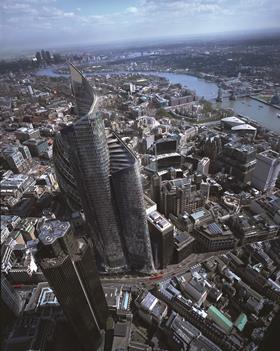Design review aimed at cutting cost of stalled £1bn tower several months overdue amid City opposition to mooted residential element

A design review of the planned Pinnacle tower aimed at cutting its £1bn cost has yet to be completed several months after it was expected to be unveiled, with the addition of a mooted residential element proving to be a key obstacle.
The review of the tower, announced in January, was initially expected to last three months, but remains ongoing as the client Pinnacle No 1 Ltd, the contractor and project manager Brookfield Multiplex, and architect KPF, continue to value engineer the designs in a bid to significantly reduce the project’s costs.
Under current plans the cost could reach £1bn.
The tower has lain dormant since the beginning of 2012, after finance for the scheme dried up.
As Building revealed in April, Brookfield Multiplex has taken on a “hybrid” contractor and project management role on the City tower (pictured), beyond its £593m job as main contractor, and has been working with architect Kohn Pederson Fox and the client to redesign the scheme.
It is understood the new plans are aimed at simplifying the 288m-tall helter-skelter form to make the unusual shape more viable for office use.
But the project team is also considering adding a residential element to the scheme in order to boost its viability.
However, this has been opposed by City of London planners, who have long objected to residential use in the City and have expressed concerns about the potential distortion of the City’s commercial development by the influx of foreign wealth into London’s residential market.
A source close the project told Building this week that unless a compromise could be reached the client would be prepared to “sit tight” and wait until the market recovered.
“Adding residential would be a game changer, but if the City doesn’t want to compromise then it can’t move ahead,” the source said.
This week industry leaders clashed over whether the influx of high-rise residential developments in central London is beneficial for the city at the Council on Tall Buildings and Urban Habitat (CTBUH) conference in central London.
City of London planning officer Peter Rees told delegates some areas of the capital “should be protected from residential,” but in a separate session developer Sir Stuart Lipton said residential towers was the capital’s “biggest opportunity” for development growth.
Rees said residential in the City could adversely affect neighbouring business and nightlife uses, but Lipton said residential towers could “drive change and regeneration”.




























No comments yet